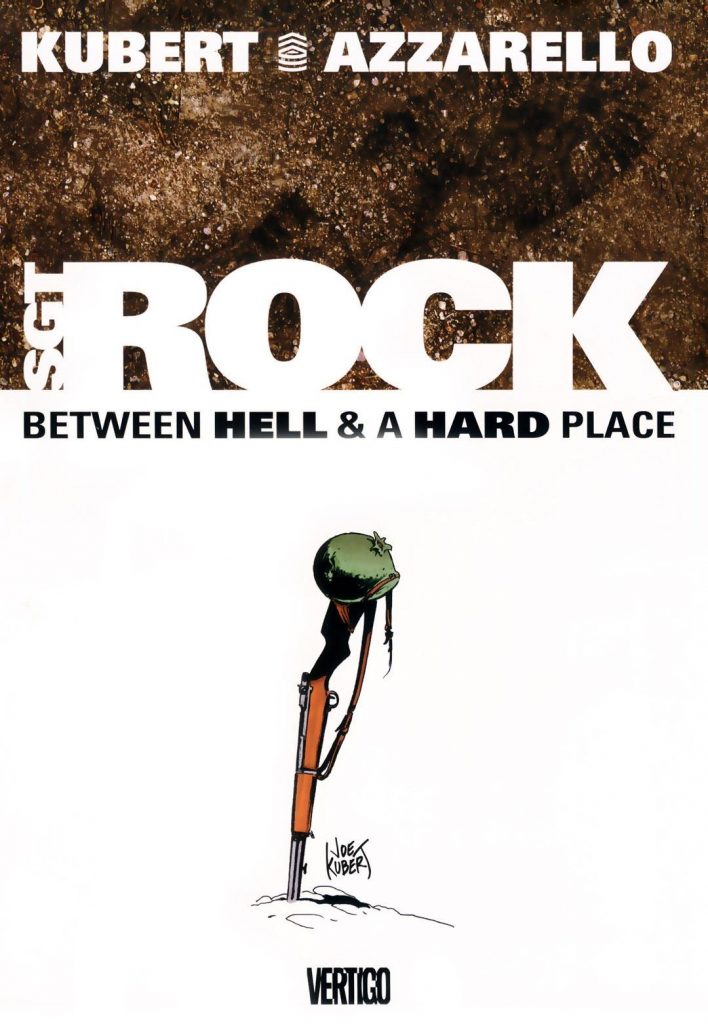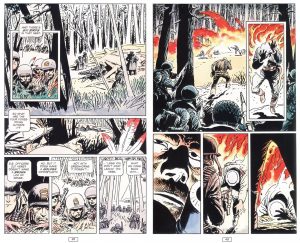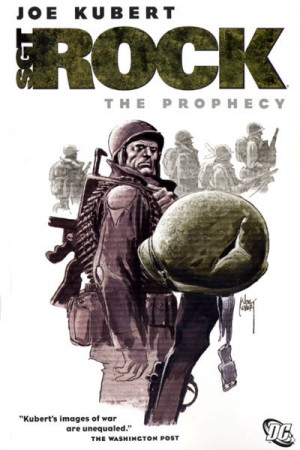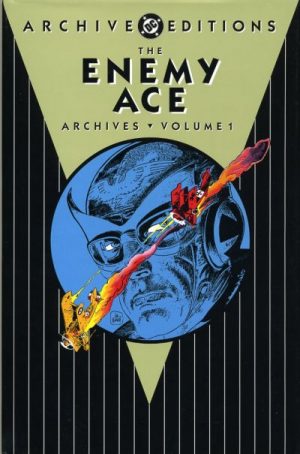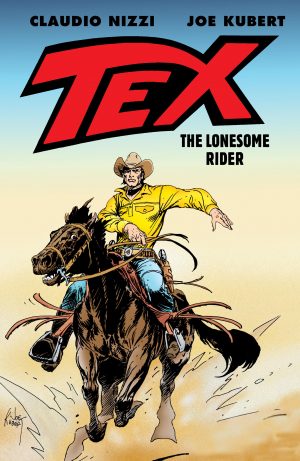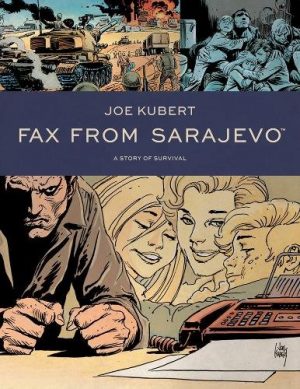Review by Frank Plowright
Joe Kubert worked on Sgt Rock on and off for almost fifty years, and this was his valedictory project. Under Kubert and Robert Kanigher Sgt Rock material was never just gut-busting World War II action. War has consequences, and while Sgt Rock was an adventure strip, those consequences were conveyed by an underlying humanity. That it was published under the Vertigo imprint meant Between Hell & a Hard Place was able to take a step into uncharted territory by being more explicit about the violence than usual.
Brian Azzarello sets his story in the Hürtgen Forest, covering areas of Belgium and Western Germany, a battle that lasted over three months, proving the longest campaign ever fought by the US Army. He takes an interesting approach, leisurely to begin with over the first couple of chapters, highlighting how war transforms the lives of many who survive death yet are left with life-altering injuries, then establishing the main cast before almost stumbling into what becomes the central issue. Is someone among Sgt Rock’s Easy Company a murderer? This question bubbles under a continually struggling offensive not clearing much territory, and with other soldiers floating in and out raising more questions about Rock’s troops.
Azzarello plays to Kubert’s artistic strengths, keeping the dialogue to a minimum and featuring several wordless pages where it’s just down to Kubert to tell the story. After a career on Rock alone stretching back fifty years, the storytelling was never going to be a problem, and this is one page after another of prime Kubert art. When needed he can turn his hand to illustration, but more usually he’s deceptively clever at creating impressions with a few lines. You’ll read through an entire story without having any real idea of what Sgt Rock actually looks like such is the shadow cast by his helmet. Ordinarily not being able to pick the title character out of a police line-up would be fundamentally frustrating, but it serves to reinforce Rock as the everyman soldier he’s intended to be, and Kubert invests his figure with a nobility. The most novel aspect is Kubert’s colouring, a washed-out watercolour pallor for the most part, leaving much of the content still in black and white. Just a few details are picked out, such as Wildman’s distinctive orange beard, red bullet tips and blood. It’s an effectively simple method that gives Between Hell & a Hard Place a very distinctive look.
The finale is disappointing, the danger real, but the perpetrator too mannered, and their attitude deliberately repugnant, while the understated and sentimental epilogue works really well. That contrast sums up the story as whole. It features some striking moments, but a cadence reflecting warfare of long ordinary passages punctuated by brief terror applies.
